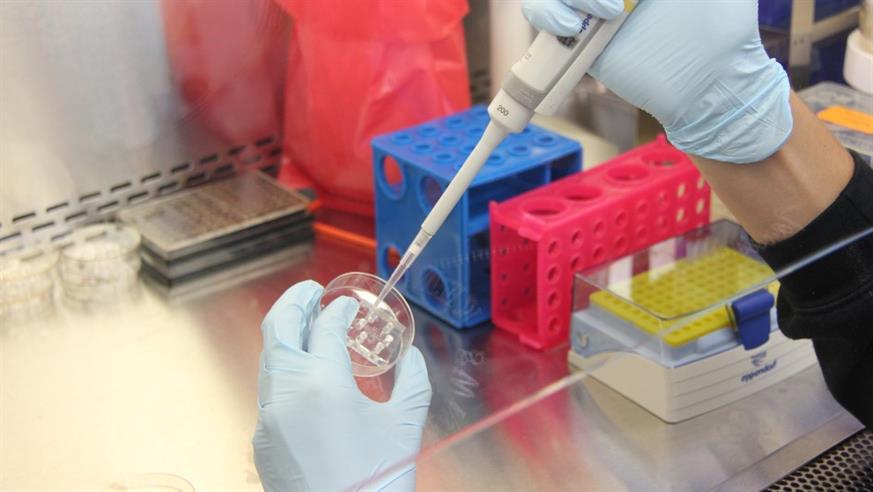
Image: Hands pipetting. Image courtesy of Pixabay. License: CC0
If you follow the news, you might often scroll, swipe or flip through an article that describes a promising new therapy or treatment for cancer. If you happen to know someone who pursues biological research, chances are that many of the projects in their institute have that familiar anti-cancer tone to them. Indeed, cancer research has been rather ubiquitous around the world since the late 1940s.
Yet, for all those scientists attempting to tear this disease apart with their pipettes and petri-plates, none, it appears, have found an absolute remedy. Indeed, “Why not?”, “How much longer?” and “What have they been doing with my donations?” are the burning questions on everyone’s minds. As a PhD student in the field, I mostly find myself on the receiving end of these questions, along with the sneering remark: “Do you think you will find the cure, then?”
I recall asking my lecturers the same questions not too long ago, only to be disappointed by their indifferent and unconvincing responses. Four years later, when it’s my turn to answer, I finally understand where their reluctance came from. These questions are simply too broad for an individual researcher to easily answer. Therefore, I decided to address them in this article, being thorough, yet non-technical to the best of my ability.
Before I commence, I should mention that all those questions inherently possess a major flaw. In using a single collective term, they fail to acknowledge the diseases covered by the term “cancer”, each requiring significantly different treatments. While we have already cured some cancers, the fact remains that the absence of an absolute remedy for all cancers poses the first and major challenge for cancer research. With that in mind, the appropriate question to ask, would surely be “Why have a significant number of cancers not been cured yet?” In order to answer that, let me briefly introduce you to the way cancers work.
Cancer — a seemingly simple problem with a not-so-simple solution
Cancer is essentially the uncontrolled and indefinite division of cells. This is triggered by damage to specific regions of the DNA, otherwise called mutations. These mutant cells accumulate to form lumps called tumours, which grow until they run out of space and eventually invade other organs in the body. To put it simply, the progression of cancer is not too different from the overpopulation of a nation. In way of a solution, one could suggest finding and destroying the division machinery of the cancerous cells.
Unfortunately, this machinery is the same for healthy cells as well, which is why such a generic strategy can damage the patient as well as the cancer. That explains the poor success rates of chemotherapy and total body irradiation. Consequently, there is a growing need to develop mechanisms that specifically target the cancerous cells.
Proteins — the specific cure to our generic problem
DNA possesses the information to create protein — the workforce of the cell. Proteins are a versatile piece of biological design that interact with all biomolecules (including themselves) to form synchronised networks that carry out cellular processes.
Mutations in the DNA drastically alter many proteins that are produced and consequently compromise the networks that they belong to. This would typically trigger the cellular machinery and the immune system to resolve the issue but, unfortunately, cancer is cunning enough to evade them. However, these mechanisms that make tumours nearly invincible could also hold the key to the specific solution that we seek.
For decades, scientists have scoured tumour cells for rogue proteins that participate in these evasive networks. This mammoth task is made monumental by the existence of many different cancers, not to mention variations in cancer cells within a single patient.
Nevertheless, scientists have persevered and have successfully identified numerous proteins as potential targets for drug design and discovery. In fact, just this last two decades, a little over 2,000 successful cancer drugs have been synthesised.
Hold on ... did we just defeat cancer?
There is a crucial step prior to making the drug available for patients, clinical trials that monitor the dose effectiveness of a drug in different patient groups, while testing for side-effects. It is at this stringent stage that a staggering 86% of drugs fail. Of course, of the 2,000, the 280 that did clear trials certainly deserve celebration. However, the 1,720 that did not make it are an indicator of the unpredictability of cancer research, which swallows time and money.
One factor adds a final layer of complexity to our cancer puzzle — the intimidating force of nature itself — evolution. No matter the progress we make, we must understand that cancer is constantly changing as a consequence of evolution. There are numerous reports of tumours developing multi-drug resistance.
We all possess regions of DNA called oncogenes, which are known to code for proteins that trigger indefinite cell division. Hence, tumour cells could indeed find new ways of resisting treatment. We might be catching up to them, but the race is far from finished. Truthfully speaking, as long as life continues to evolve, this race will go on. As scientists, we cannot predict or promise our success, but only assure you that we will never stop running.
Varun Ramaswamy is a PhD student in the Hit Discovery and Structural Design team within the Division of Cancer Therapeutics.
comments powered by